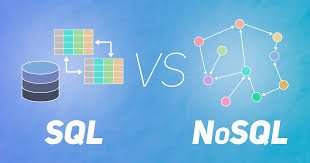The Database Dichotomy: Navigating Structure, Scale, and Strategy with SQL and NoSQL
In the architecture of modern information systems, the choice of a database is a foundational decision with far-reaching consequences for an application’s performance, reliability, and ability to evolve. While the landscape is populated by a vast array of specialized tools, the primary strategic division lies between the established, structure-enforcing world of SQL (Structured Query Language) databases and the flexible, scale-oriented paradigm of NoSQL (“Not Only SQL”). Moving beyond a simple comparison of features, a deeper understanding requires examining the fundamental trade-offs they represent, the sophisticated architectural patterns they enable, and the future they are co-creating. The decision is not merely technical but strategic, forcing developers and architects to balance the imperatives of data integrity against the demands of hyper-scalability and agility.
The Inescapable Trade-off: Brewer’s CAP Theorem
At the theoretical heart of the SQL and NoSQL divergence lies the CAP Theorem, a principle formulated by computer scientist Eric Brewer in 2000. [1][2] It posits that any distributed data store can only simultaneously guarantee two of the following three properties: Consistency, Availability, and Partition Tolerance. [1][3] In this context, Consistency means that every read operation receives the most recent write or an error. [2] Availability ensures that every request gets a non-error response, without the guarantee that it contains the most recent data. [4] Partition Tolerance is the system’s ability to continue operating despite a network failure or “partition” that prevents communication between nodes. [2] Because network failures are an unavoidable reality in any distributed system, partition tolerance is a necessity, not a choice. [3][4] Therefore, system designers are forced into a critical trade-off: in the event of a network partition, they must choose between consistency (CP) and availability (AP). Traditional relational databases like MySQL or PostgreSQL, when deployed in a distributed fashion, are often designed to prioritize consistency. If a partition occurs and they cannot guarantee that a read will see the latest write, they will return an error, thus sacrificing availability for correctness. Conversely, most NoSQL databases, such as Cassandra or MongoDB, are built as AP systems. [4] They will always return the best possible version of the data they can access, even if it’s stale, prioritizing system uptime over immediate, universal consistency—a model known as “eventual consistency.” This choice has profound real-world implications: a banking system processing a wire transfer cannot compromise on consistency and must be a CP system, whereas a social media platform can tolerate a brief delay in a “like” count propagating across all servers in exchange for ensuring the user always has a seamless, available experience (an AP system).
Polyglot Persistence: The Pragmatic Architectural Solution
The realization that no single database can optimally solve all problems has led to the rise of “polyglot persistence,” an architectural pattern where a single application utilizes multiple, distinct database technologies for different tasks. [5][6] This approach rejects the “one-size-fits-all” mentality, instead leveraging the specialized strengths of both SQL and NoSQL systems to build more robust and efficient applications. [5][7] A modern e-commerce platform serves as a quintessential real-world example of this strategy in action. The core transactional components, such as customer accounts, orders, and payment records, would be entrusted to an ACID-compliant SQL database like PostgreSQL. [5] The absolute need for data integrity and complex, reliable transactions makes this choice non-negotiable. Meanwhile, the product catalog, with its semi-structured data and evolving attributes (e.g., some products have sizes and colors, others have technical specifications), is a perfect fit for a flexible NoSQL document database like MongoDB. [7] For ephemeral, high-velocity data such as user sessions and shopping carts, a key-value store like Redis provides the lightning-fast read/write performance required. [8] To power a “customers who bought this also bought…” recommendation engine, a graph database like Neo4j is employed to efficiently navigate the complex web of relationships between users and products. [8] This hybrid model allows each component of the application to perform optimally by using a data store perfectly matched to its specific workload, data structure, and performance requirements. [6]
A Converging Future: The Ascent of NewSQL
The stark dichotomy between SQL and NoSQL has created a demand for a new class of database that bridges the gap: NewSQL. [9][10] These modern database systems aim to deliver the best of both worlds—the horizontal scalability and high performance of NoSQL combined with the ACID guarantees and familiar SQL interface of traditional relational databases. [10][11] Examples like Google Spanner, CockroachDB, and TiDB are engineered from the ground up for distributed environments. [9][10] They achieve strong consistency across geographically distributed clusters by employing sophisticated consensus algorithms like Paxos or Raft. [12][13] These algorithms allow a group of nodes to agree on a single value or state, even in the presence of failures, ensuring that transactions remain consistent across the entire cluster. [12][14] For instance, CockroachDB uses the Raft consensus algorithm to manage log replication and elect leaders, ensuring that data remains consistent and available despite machine or even datacenter failures. [9][15] This emerging category challenges the notion that scalability must come at the cost of consistency. While they have not replaced traditional SQL or NoSQL databases, which remain dominant for their specific use cases, NewSQL systems represent a significant evolution, providing a powerful option for global-scale applications that require both massive horizontal scaling and strict transactional integrity. [11][16]



